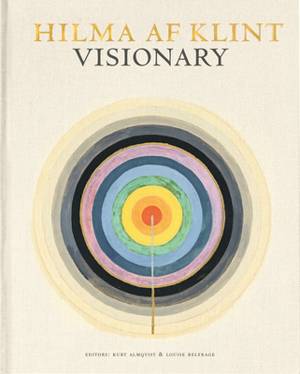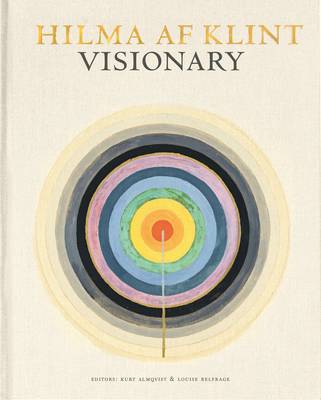
- Afhalen na 1 uur in een winkel met voorraad
- Gratis thuislevering in België vanaf € 30
- Ruim aanbod met 7 miljoen producten
- Afhalen na 1 uur in een winkel met voorraad
- Gratis thuislevering in België vanaf € 30
- Ruim aanbod met 7 miljoen producten
Zoeken
€ 52,57
+ 105 punten
Omschrijving
The 2018 exhibition at the Guggenheim Museum in New York, Hilma af Klint: Paintings for the Future, introduced the general public to the abstract mystical masterpieces of Swedish painter Hilma af Klint (1862–1944). Based on a seminar held at the Guggenheim Museum at the opening of this acclaimed exhibition, this volume compiles the insights of the seminar’s contributors alongside reproductions of works, archival photographs and images from af Klint’s journals.
Hilma af Klint: Visionary explores the social and spiritual movements that appeared at the turn of the 20th century, inspiring the pioneers of modernism and abstract art: Kandinsky, Mondrian, Malevich and af Klint. What was the zeitgeist that inspired such an eruption in abstract art? What were the conditions that created Hilma af Klint? Academics and experts Julia Voss, Tracey Bashkoff, Isaac Lubelsky, Linda Dalrymple Henderson and Marco Pasi each take a different approach. Voss analyzes af Klint's biography, pinpointing five important events in her life; Bashkoff presents her connection to Hilla Rebay and her plans for the building of a temple; Lubelsky traces the origins of theosophy in New York; Henderson examines the occult and science; and Pasi considers esotericism’s changing role in culture.
Hilma af Klint: Visionary explores the social and spiritual movements that appeared at the turn of the 20th century, inspiring the pioneers of modernism and abstract art: Kandinsky, Mondrian, Malevich and af Klint. What was the zeitgeist that inspired such an eruption in abstract art? What were the conditions that created Hilma af Klint? Academics and experts Julia Voss, Tracey Bashkoff, Isaac Lubelsky, Linda Dalrymple Henderson and Marco Pasi each take a different approach. Voss analyzes af Klint's biography, pinpointing five important events in her life; Bashkoff presents her connection to Hilla Rebay and her plans for the building of a temple; Lubelsky traces the origins of theosophy in New York; Henderson examines the occult and science; and Pasi considers esotericism’s changing role in culture.
Specificaties
Betrokkenen
- Auteur(s):
- Uitgeverij:
Inhoud
- Aantal bladzijden:
- 180
- Taal:
- Engels
Eigenschappen
- Productcode (EAN):
- 9789163972034
- Verschijningsdatum:
- 20/12/2019
- Uitvoering:
- Hardcover
- Afmetingen:
- 229 mm x 292 mm
- Gewicht:
- 950 g

Alleen bij Standaard Boekhandel
+ 105 punten op je klantenkaart van Standaard Boekhandel
Beoordelingen
We publiceren alleen reviews die voldoen aan de voorwaarden voor reviews. Bekijk onze voorwaarden voor reviews.











